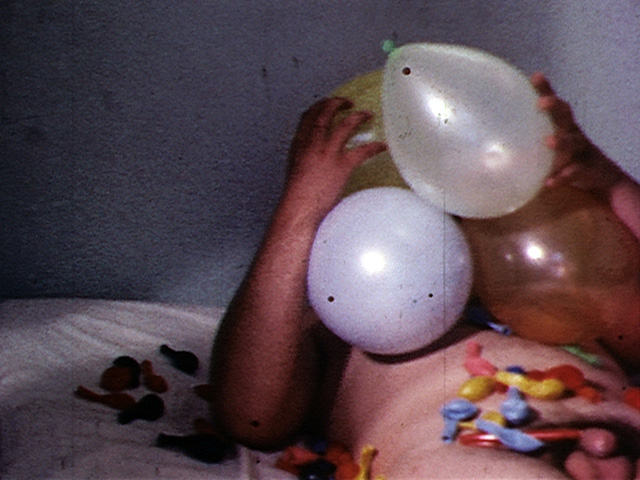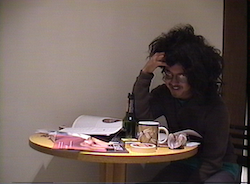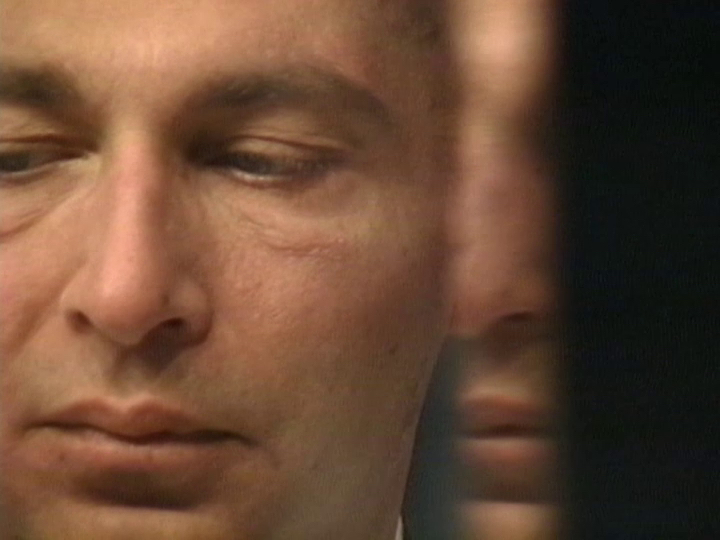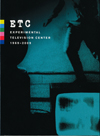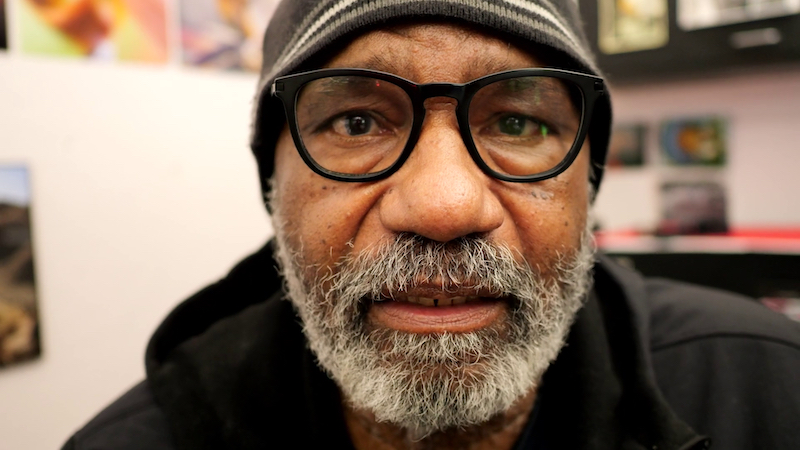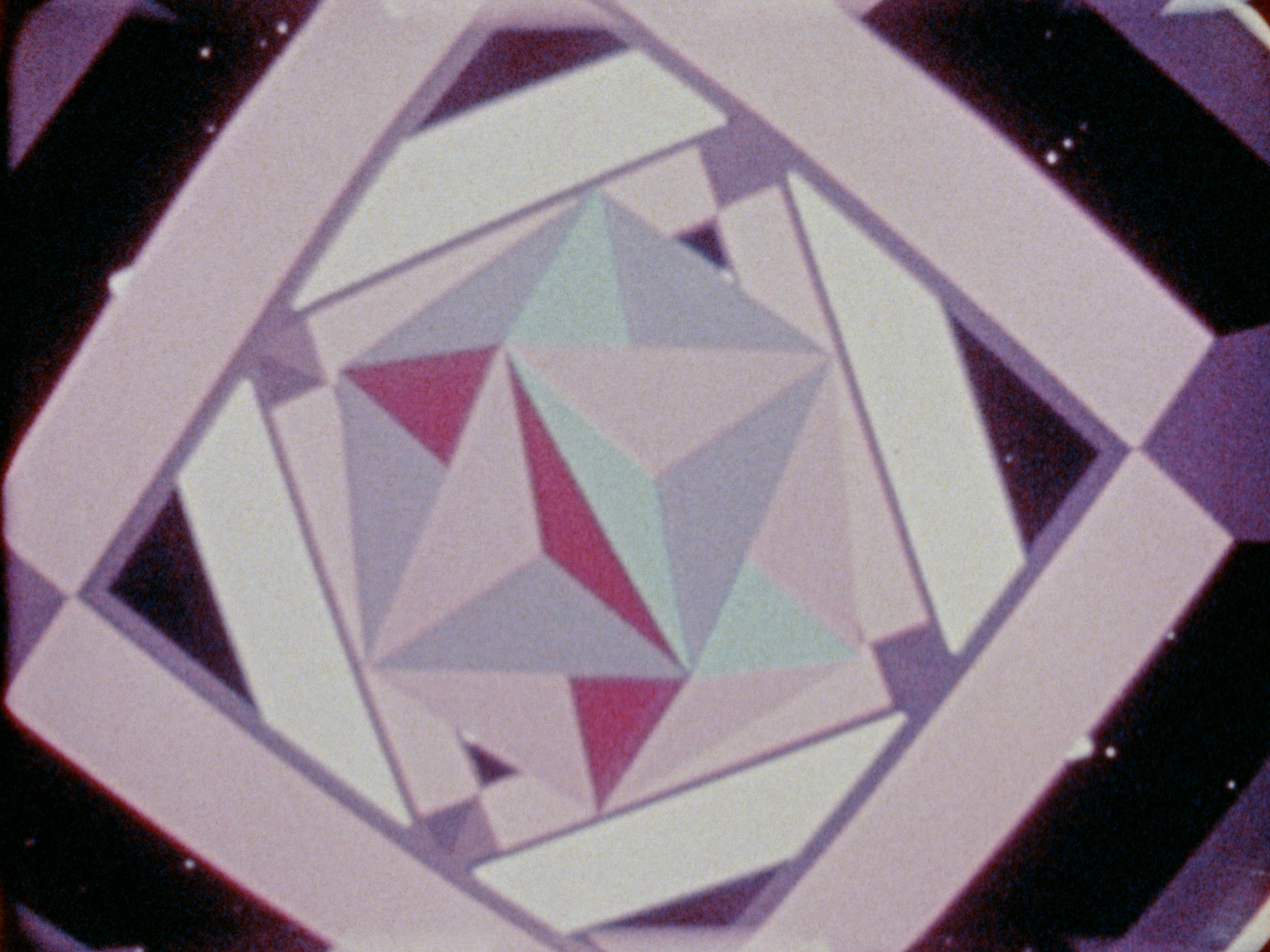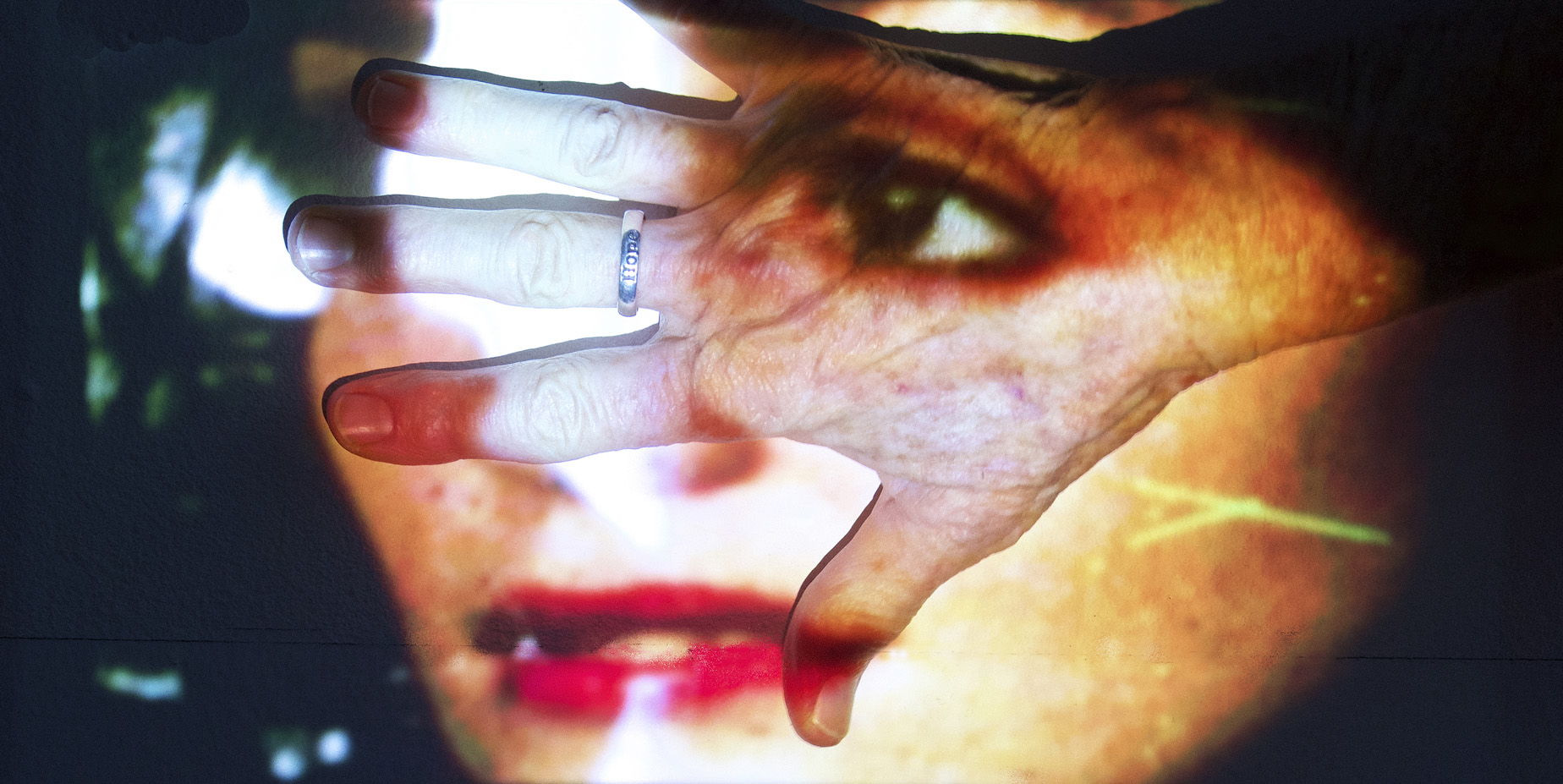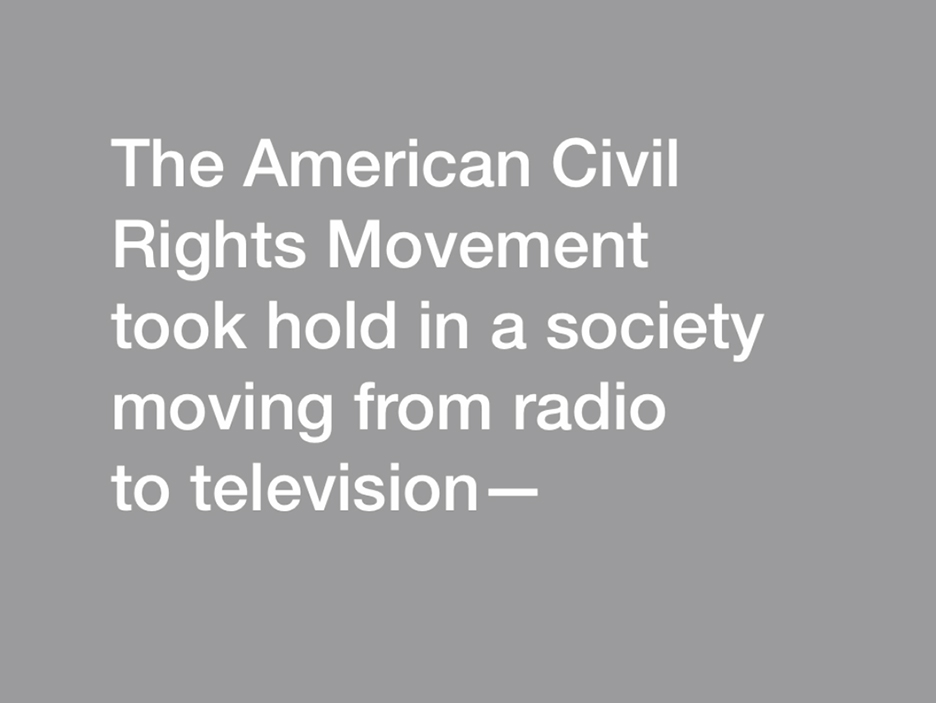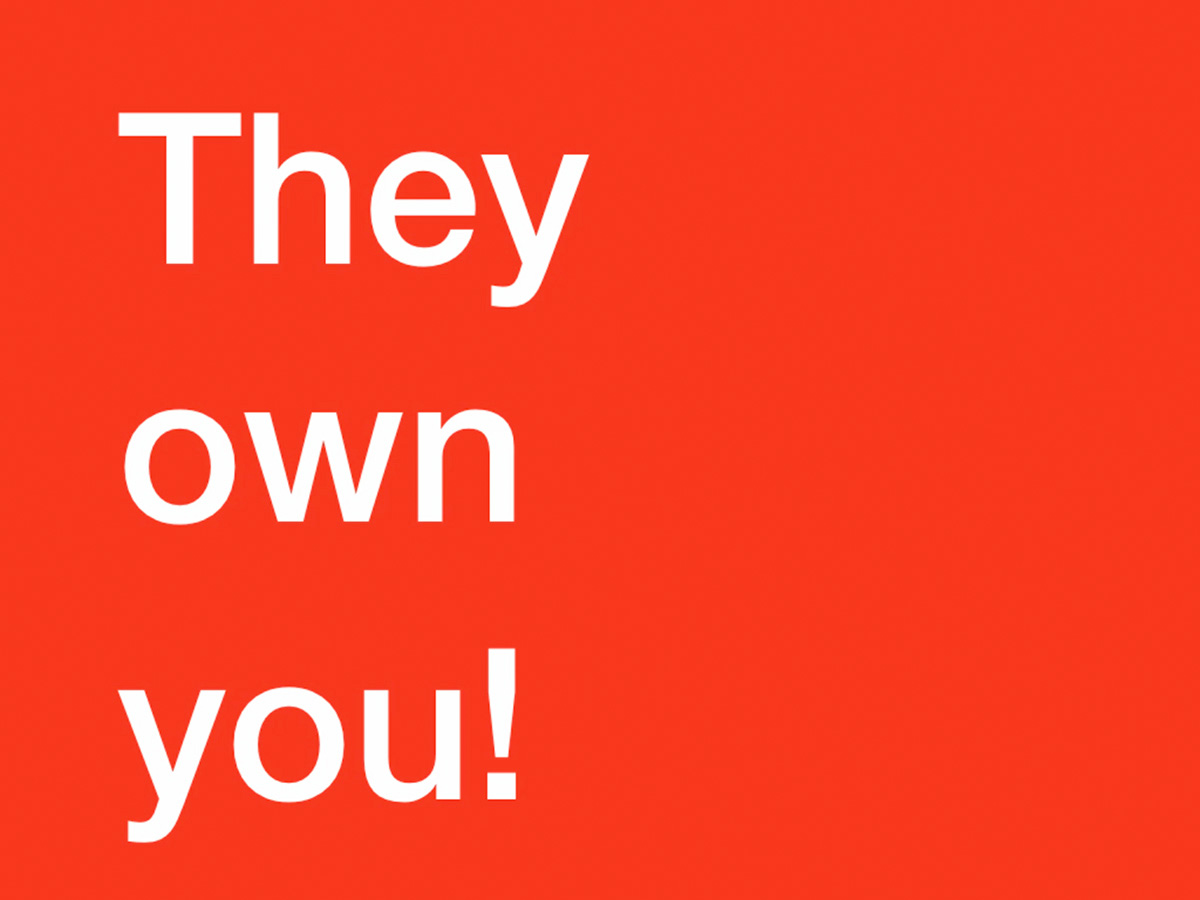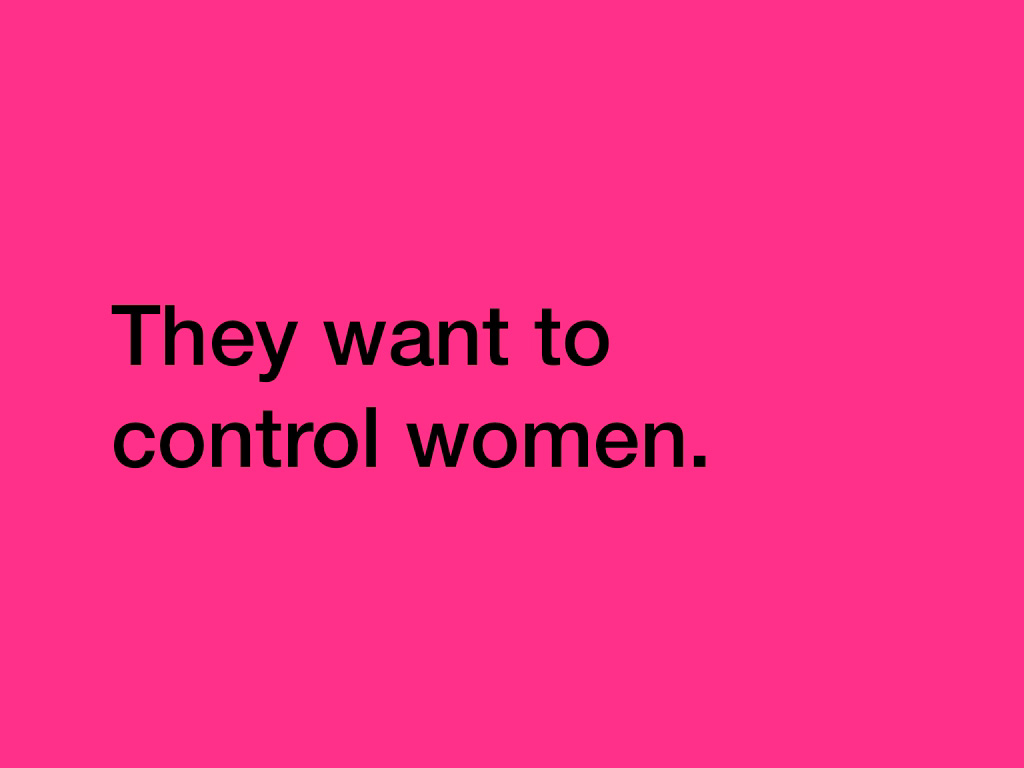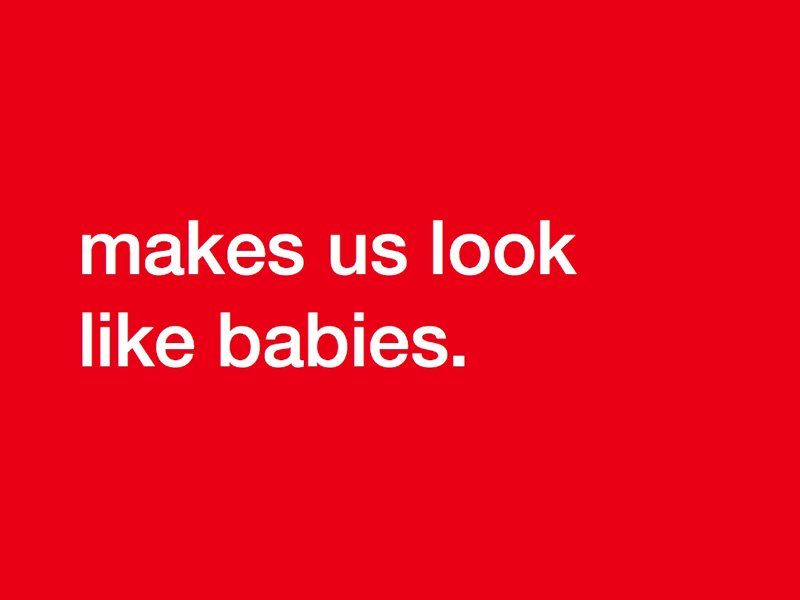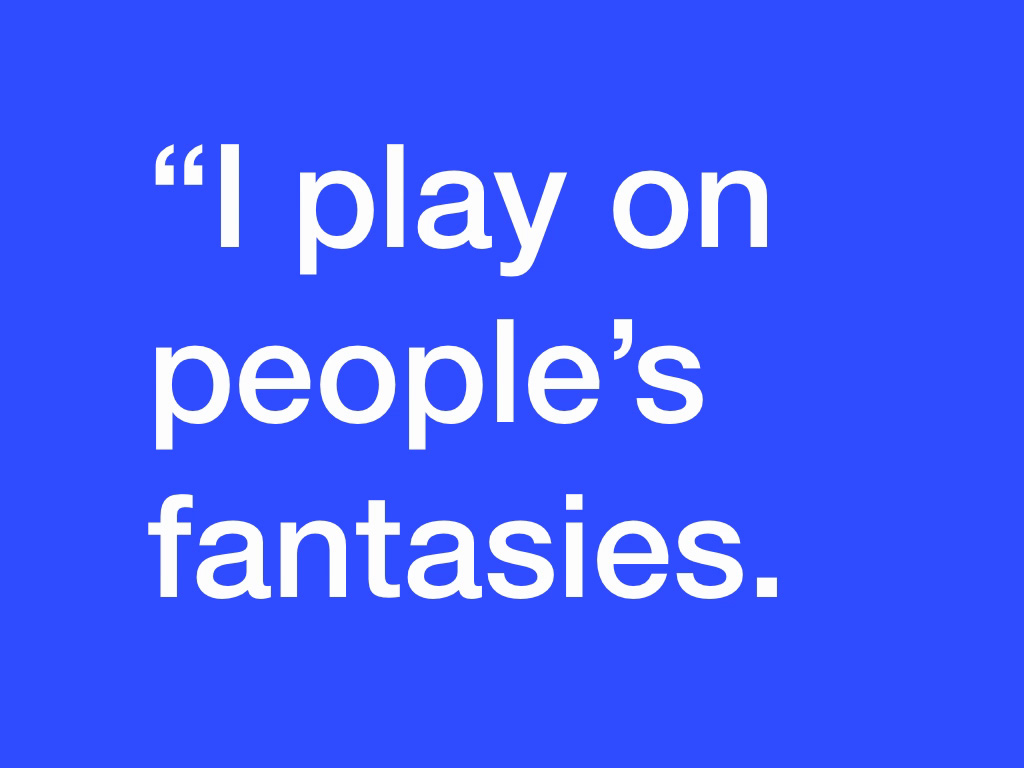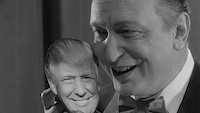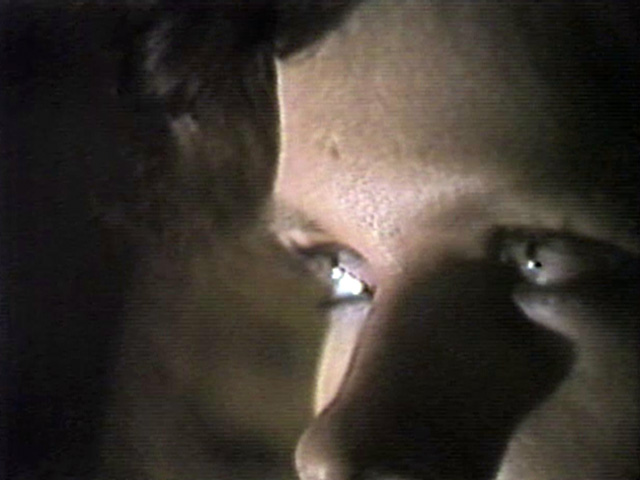The EAI Collection
Title Browse
EAI commissioned artist Takeshi Murata to create a special introductory piece for EAI's 40th anniversary programming, which took place throughout 2011. Murata's creation is a stunning homage to forty years of experimentation by artists. With his intricate and lush interventions into archival...
Ear-Responsiblity
John Sanborn and Mary Perillo in collaboration with David Van Tieghem.
1985, 7:33 min, color, sound
The artist composes a picture through the action of thrusting his fingers into jars of pigment powder.
East Coast, West Coast, Holt and Smithson's first collaborative experiment with video, takes the form of a humorous bi-coastal art dialogue. Joined by their friends Joan Jonas and Peter Campus, Holt and Smithson improvise a conversation based on opposing — and stereotypical — positions of East...
Dividing the video frame into different segments, Hubbard is able to engage multiple planes and perspectives simultaneously, creating a dimensionality and dynamic interactivity not possible when painting on canvas.
A study in anatomy, scale and extended vocal technique, Eclipse comprises multilayered sound and imagery of the artist's mouth in closeup, issuing a grating squall. A flashlight, offscreen, generates an unsteady haloing effect around the gaping mouth. With multiple takes superimposed, the effect...
Ecstasy Unlimited: The Interpenetrations of Sex and Capita!
Laura Kipnis
1985, 59:54 min, color, sound
El Adios Largos
Andrew Lampert
2013, 11:13 min, color, sound, 16 mm film on video, Spanish with English subtitles.
In 1973, Robert Altman's The Long Goodbye was both a critical and commercial flop. Set in a time transposed, neo-noir Los Angeles, Elliott Gould's bumbling performance as gumshoe Philip Marlowe left Raymond Chandler aficionados dismayed, as did the kinetic camera work of cinematographer Vilmos...
El Zócalo is an observational portrait of Mexico City's central Plaza on one day in August. Soldiers, Aztec dancers, clowns, food vendors, protesters, rain, dogs, tourists, balloons, and dignitaries all meet in the public space of the Zócalo. This documentary-style work represents daily life...
Steeped in black humor, this concise political critique is Acconci's contribution to artist Jenny Holzer's collaborative Sign on a Truck project, which was presented on a Diamond Vision Screen in New York in response to Ronald Reagan's re-election campaign in 1984. Acconci portrays Reagan as a...
In his early works, Hill explores the structural and organic relation of linguistics to electronic phenomena. He states, "Certain structural properties of video are revealed in an almost primal sense." In Electronic Linguistics, small electronic shapes on the screen, moving in a gradually...
In his works from the late 1970s, Hill continues to construct a dialogue of sound and image, devising analogies between linguistics and electronic phenomena. Elements is an electronic tapestry of graphic shapes and syllabic sound. This fabric of landscape images and language fragments pulses back...
Hands work furiously over the pleasing shape of an insensate computer mouse, either out of frustration or fixation. The red glow of the mouse's laser eye glows against the palms, like Prometheus's stolen flame. The result is a kind of dance between the organic and inorganic, and a sense of the...
Writes Shimizu: "Studying to become an actor, I read a tragic monologue written by my friend, Nathan Frank, who was also operating the camera. I started making the video right before Y2K, the mood reflected here."
This interview is with Silvia Astudillo, home healthcare aide.
Empty, a collaboration between Oursler and David Bowie, was originally shown as part of a multimedia installation. The piece features Bowie voicing text written by Oursler, whose longtime exploration of language and sound has led from stream-of-consciousness narratives to collaborations with...
Encounters of the WTC-Kind is a multi-disciplinary, ongoing investigation into the culture of ghosts and waveforms residing in the World Trade Center building environment. Begun in the summer of 2000, when Lucas was an artist-in-residence in the North Tower of the Trade Center, this project has...
Filmed over a few nights in the late Ron Vawter's dressing room during the show Roy Cohn/Jack Smith, at the Kitchen, New York, in October 1993, this tape is a small but poignant homage to an extraordinary talent.
"...Endangered is a compelling expression of the unique power of celluloid and the filmmaking process. Hammer does not hide behind the process of filmmaking – in Endangered we see her making the film. In her hands, the transformation of film into a poetic and avant garde art form comes about...
Writes Pearlstein: "Episode presents a group of four characters acting 'as if' they were a 'standard' nuclear family unit: mother, father, daughter and son. Through a series of eight scenes they act out the dynamics of familial relationships, exposing the underlying complexities and subtleties....
In his works from the late 1970s, Hill continues to construct a dialogue of sound and image, devising analogies between linguistics and electronic phenomena. Equal Time is an abstract visual translation of two contrasting narratives, one about psychological space and the other about concrete space.
Hodel camps out in style, inside a white apartment. Her performance of eating and drinking speeds and slows. Eskimo Woman mixes repetition, couture and a powerful soundtrack by Stephen Vitiello.
ETC: Experimental Television Center 1969-2009
Experimental Television Center
2009, 1140 min, b&w and color, sound, DVD
ETC: Experimental Television Center 1969-2009 is a compilation of groundbreaking electronic media work by 100 artists who have worked in the Center's Residency Program during the last 40 years. The collection offers a look at the evolution of the unique artist-designed sound and image tools...
The timeless petty territorial battles that might have plagued teenagers of the "Old World" are the subject of Lampert's fixed camera, which frames a pastoral scene of leafy trees and an overgrown road, reminiscent of 19th-century landscape painting and early cinema.
André brings her minimal yet elegantly sensual aesthetic to this interpretation of dance for video. She writes that Evento is "a spectacle of dance filmed within the natural decor of a hangar. [It explores] opposition, the duality of two dancers in a variety of architectural movements that...
In a series of short pieces drawn from his ongoing feature film project Behold Goliath, Kalin further develops the method of on-screen, appropriated, literary texts that he employed in Third Known Nest. The title of the series is a reference to the stories of writer and critic Alfred Chester...
"Evidence, broadly construed, is anything presented in support of an assertion. "In these horrific times when lies are blatantly exclaimed as truths, when fear makes us withdraw from each other, when difference is maligned as xenophobia, and when atrocities are committed in the name of...
Cokes continues his investigation of appropriated text and image, this time with a more explicitly topical approach. Evil addresses urban life and mediated representations of capital and capitalism, as well as the popular contemporary usage of the term "evil." The video is drawn from Cokes'...
Writes Cokes: "This work consists of an excerpt from Slavoj Zizek's text Welcome to the Desert of the Real set to two music tracks by The Notwist. In Zizek's prescient discussion of the potential meanings and consequences of 09.11.2001 (written five days after the events) we find him questioning...
Cokes writes, "Evil.11 (The Katrina Debacle) is a text animated essay about the Bush Administration's response to the 2005 Hurricane Katrina disaster. The text is based on an e-mail I received in Korea in the immediate aftermath of the events. Juxtaposing three songs from diverse pop musical...
Writes Cokes, "Evil.12 is a 12-minute video animation with sound. The text is excerpted from Brian Massumi's essay 'Fear (The Spectrum Said),' which discusses the Bush Administration's terror alert color-coding system as a method to modulate public affect via media representation. Aimed...
Writes Cokes, "Evil.16: Torture.Musik animates excerpts from an article by Moustafa Bayoumi that was originally published in The Nation magazine on December 26, 2005. While surveying the topic I found this article to be a key and cogent text in a body of reportage and scholarship devoted to the...
Writes Cokes, "Evil.20: b.o.m.h.(edit) restructures images of the World Trade Center and its destruction set to a hauntological dubstep sound mix I made based on tracks by Shackleton. The appropriated visuals are displaced and re-rendered in monochrome negative. The computer voiceover is an...
Evil.5. (No responsibility mix) continues Cokes' investigation of the uses of appropriated text and pop music as a form of political critique. Employing a deliberately didactic approach, Cokes challenges the Bush administration's policies and the war in Iraq. Statements on the Iraq war and Bush's...
Writes Cokes: "Evil.6 animates an edited transcript from George W. Bush's 2003 State of the Union Address. This text is noteworthy because in it Bush outlines his case for the invasion of Iraq and toppling Saddam Hussein's dictatorship. Subsequently, Bush's claims regarding such matters as Iraq's...
Cokes continues to explore the uses of appropriated text and pop music in illuminating the discursive nature of issues that are presented in the media as essentially ethical and humanist. Here he employs a selective, chronological list of twenty explosions that occurred during the first year of...
Evil.8 presents a word-for-word transcription of a 2004 New York Times editorial discussing the notorious Abu Ghraib prison images, and the actions and tactics of the Bush administration before and after these images were made public. This animated text, rendered in "patriotic" colors, is set to...
Evil.9 combines an Internet-circulated hip-hop music video by the Canadian-German artist Mocky with an Associated Press text outlining the effect of the U.S.A. Patriot Act on the basic rights of U.S. citizens. Cokes writes: "Our unwillingness to confront the implications of our acts and the...
Cantor reimagines Kenneth Anger’s Invokation of My Demon Brother (1969) as if it were a paean to Hindu goddess of destruction Kali instead of Lucifer. In Cantor's take, Anger's hypermasculine imagination of the occult is replaced by that of an ironic depiction of female "hysterics"; a romantic...
Atlas' fascination with "narrative, psychology, dance, and flights of fantasy," is manifested in this dynamic videodance musical. Here the postmodern choreography of Karole Armitage is performed by Armitage, Michael Clark and others to American pop and Latin music. Framed and interrupted by the...
A meditation on tranquility and the slow emotions of natural change, this composition by Meredith Monk has a bell like clarity of revelation. One note becomes a chorus, and the chorus becomes a mood as small elements shift and alter their place in our vision, until they assemble into a...
Atlas' 2013 film Exchange is based on the 1978 dance piece of the same name by legendary dancer/choreographer Merce Cunningham. Atlas created the newly completed film from never-before-seen footage that he shot in 1978 and that was only recently rediscovered by the Merce Cunningham Trust (MCT)....
Writes Zoe Beloff: "The philosopher Walter Benjamin and his friend playwright Bertolt Brecht spent time together in exile from Nazi Germany. Exile imagines that they are still in exile in New York, 2017. In the intervening years they have changed—in the contemporary world, refugees and victims of...
Extracurricular Activity Projective Reconstruction #1 (Domestic Scene)
Mike Kelley
2000, 29:44 min, b&w, sound
Kelley has constructed a half-hour drama inspired by a photo found in a high school yearbook. The original, a still from a school play, depicts two young men in a shabby apartment. From this image Kelley has re-staged a 'Domestic Scene': the protagonists' unnerving, at times histrionic,...
In a rare turn behind the camera, Bag's presence looms large as ever in Extreme Life System (Patent Pending). In his "eighth, and hopefully final" video dispatch to the US Patent Office, Guru Brad Masters (a licensed sex therapist, master clairvoyant, certified birthing coach and brown-belt...
"Eye Contact is a gender-dream, largely constructed from imagery contributed by friends and students. The barely discernible narrative outline begins with a protagonist falling asleep in the tub. It then explores multiple and cascaded slippages in gender identity and gender attitudes, ending with...
The camera frames the artist's head. Two hands, palms pressed together, aim at the artist's face and hit the wall right behind him. His eyes close instinctively. Trying to keep his eyes open, he slowly gains, and then loses again, control of his eye movements.





























